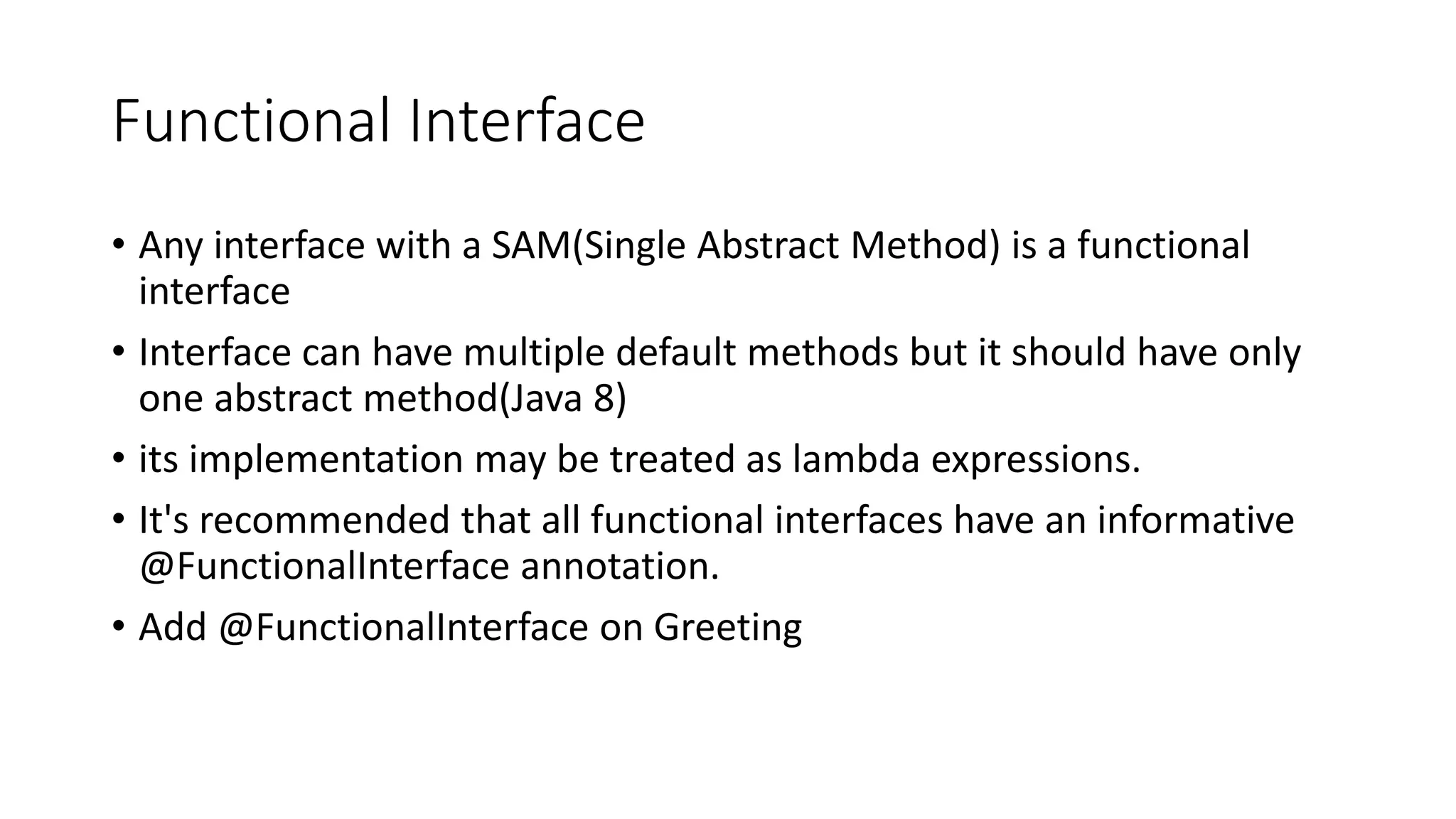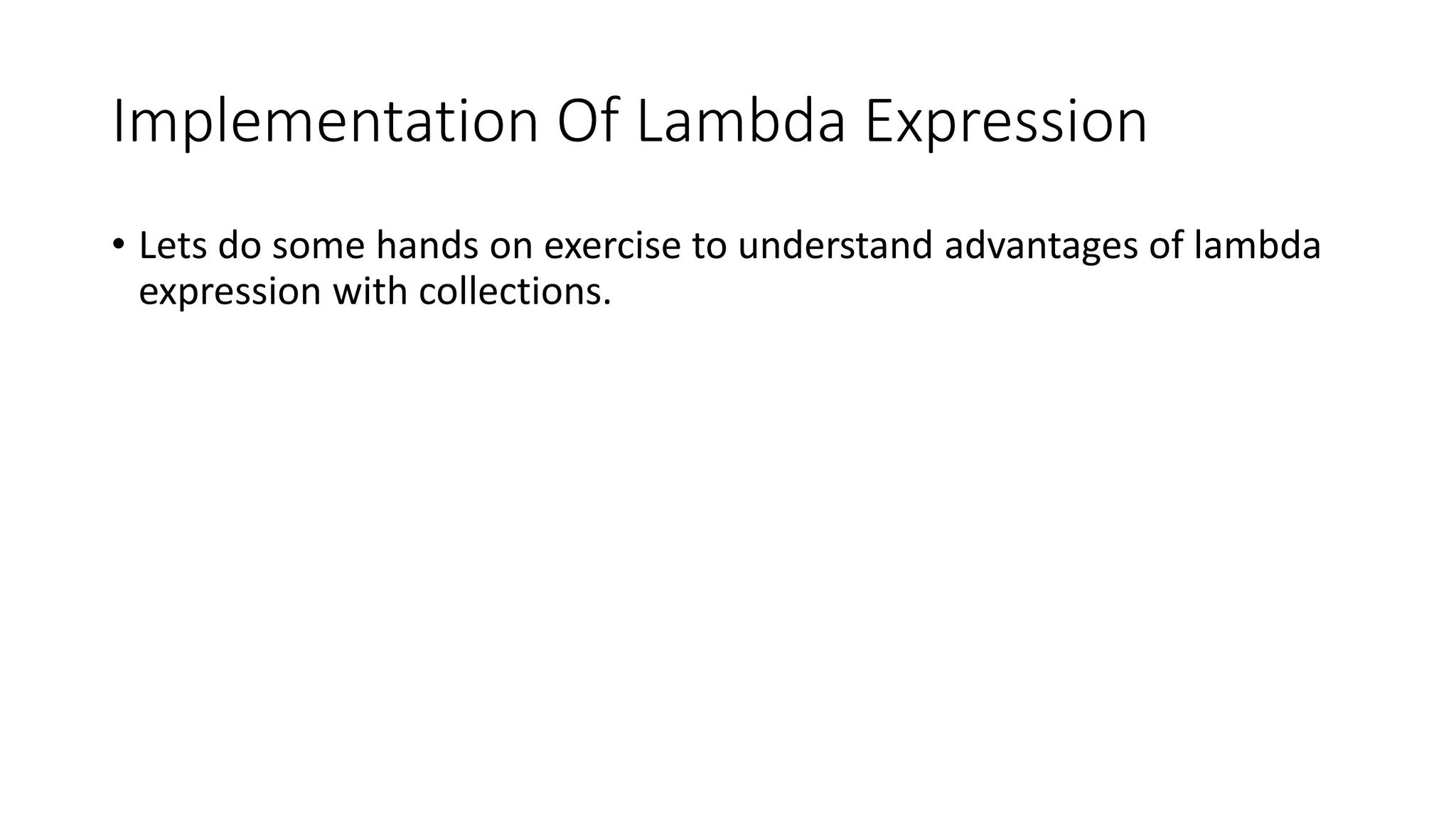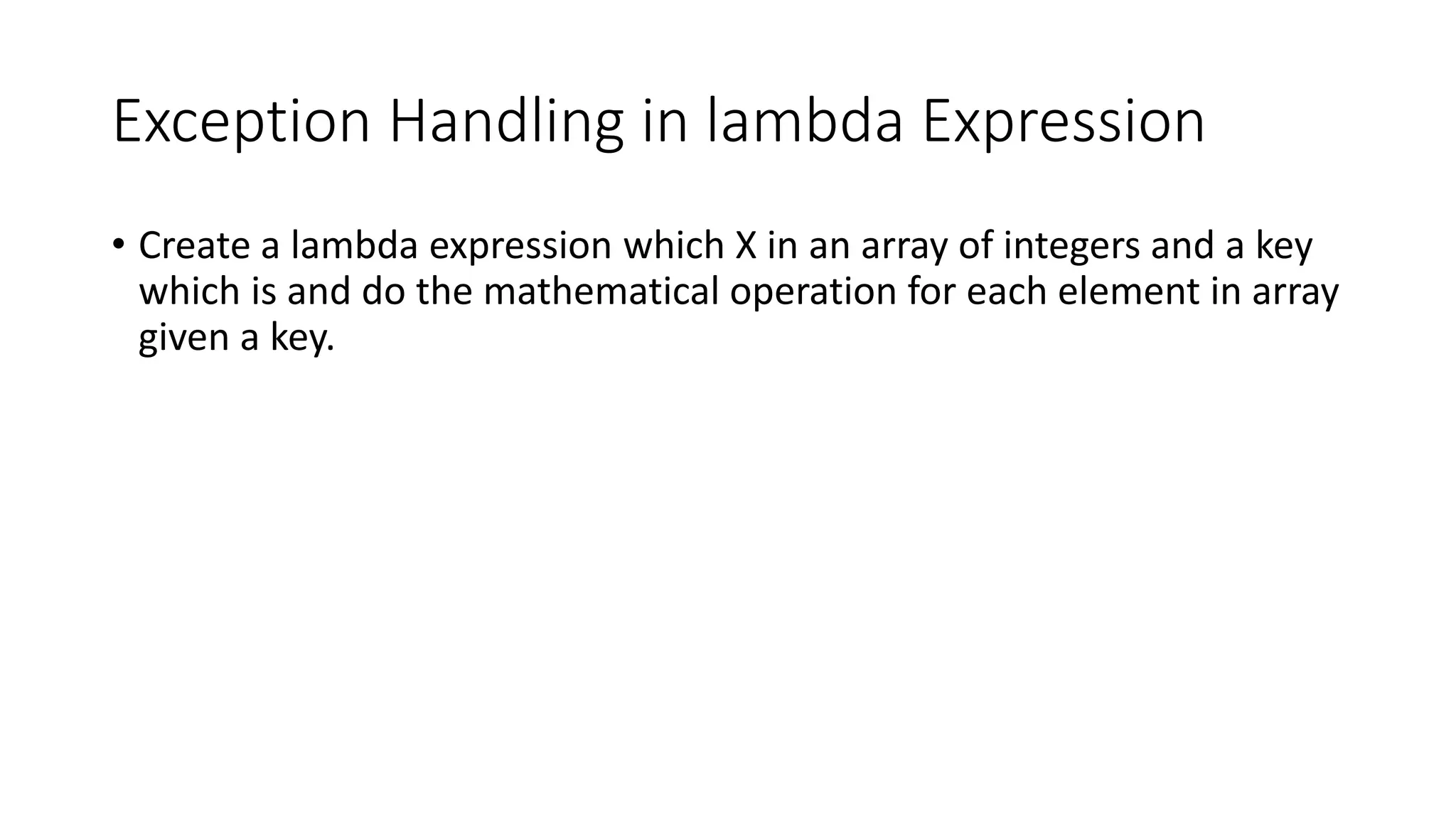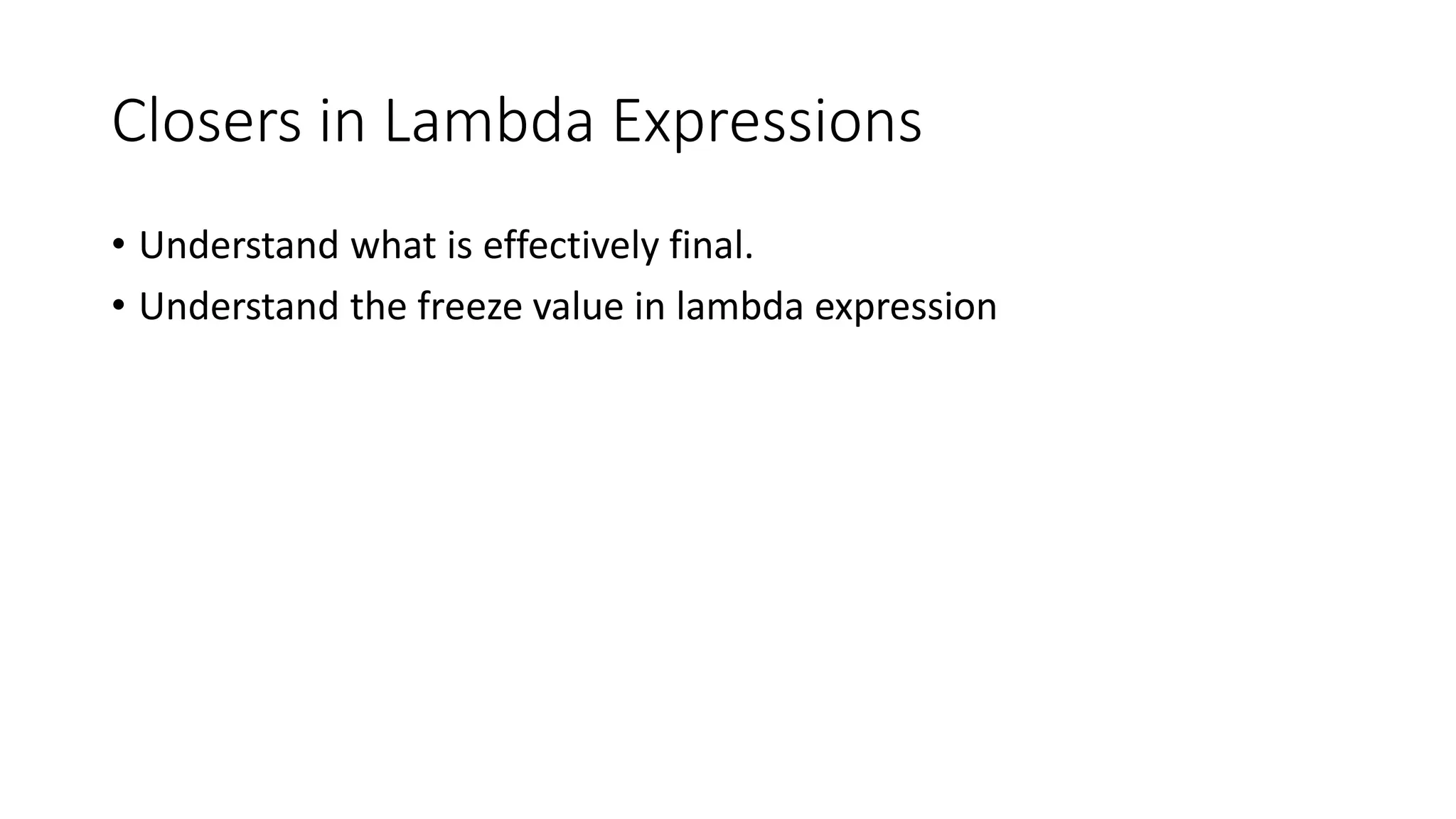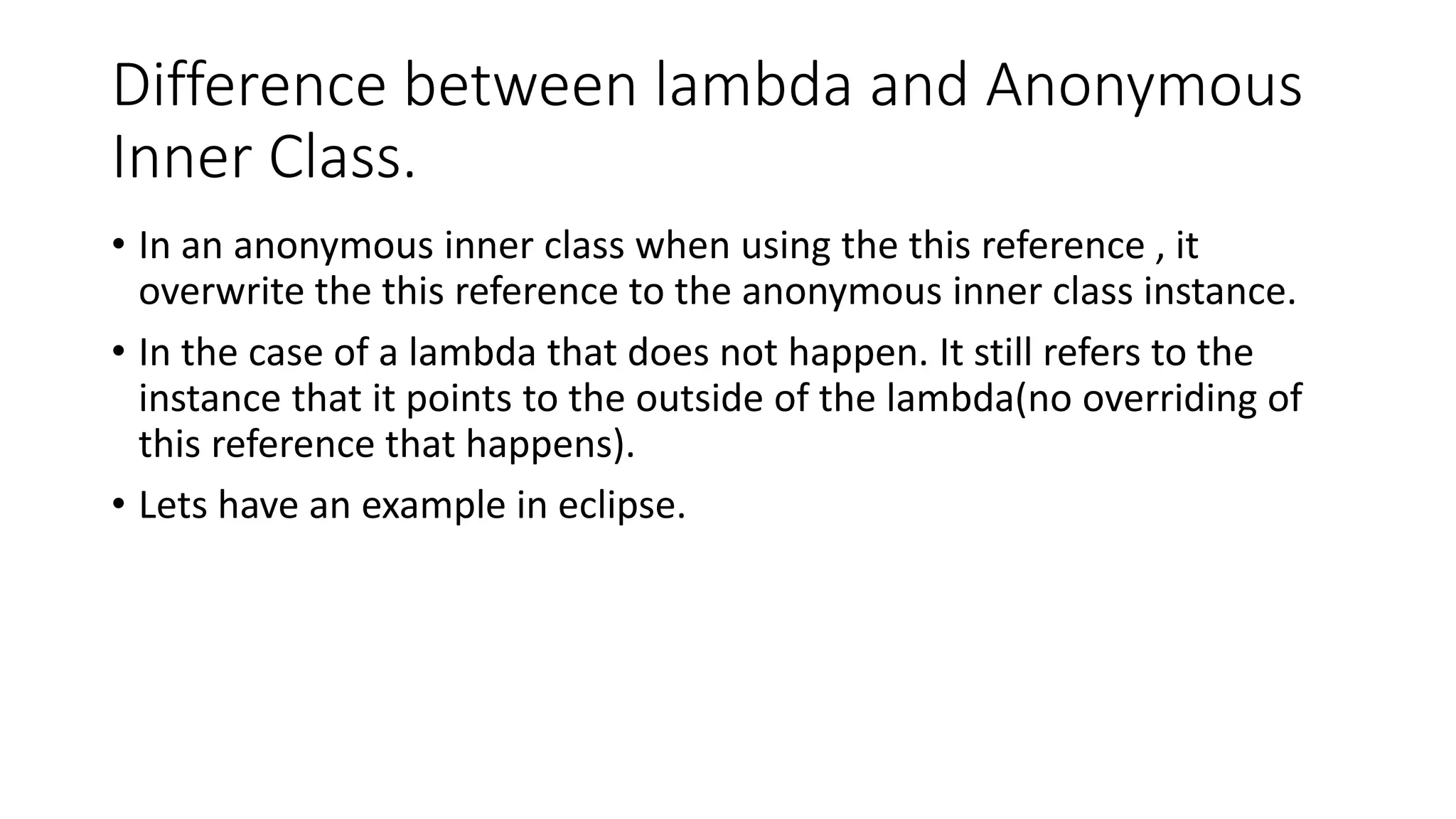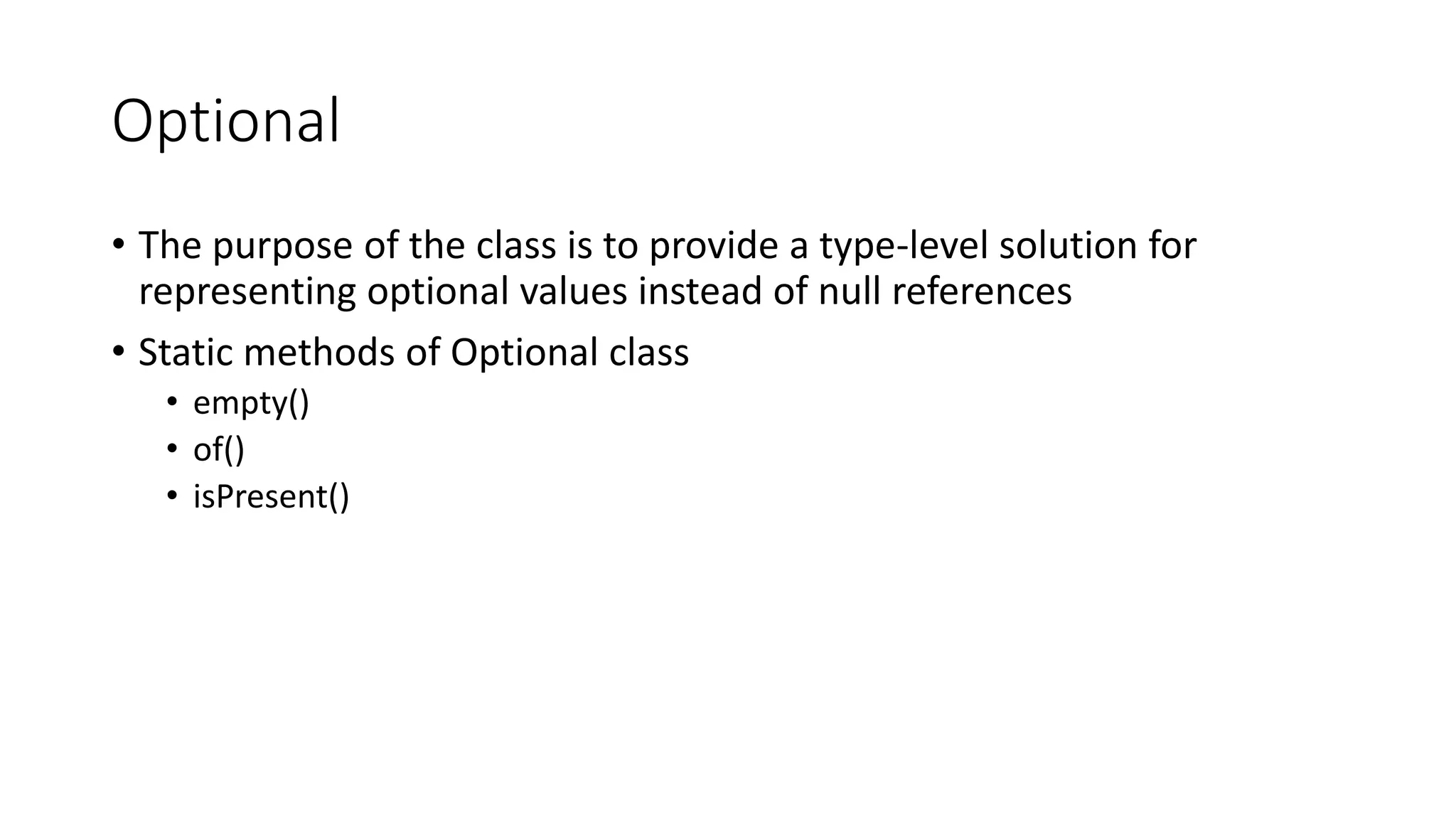Lambda expressions in Java 8 enable functional programming and allow code blocks to be treated as values. They provide a more readable and concise syntax than traditional anonymous classes. Lambdas improve APIs and support parallel processing. Functional programming separates code from objects and allows independent functions. Lambda expressions infer types from functional interfaces and can implement interfaces like Runnable more concisely than anonymous classes. Java 8 defines functional interfaces to have a single abstract method to be compatible with lambdas. Common functional interfaces include Predicate and Consumer. Streams and Optional are new classes that work with lambdas to support functional-style operations on collections and optional values.

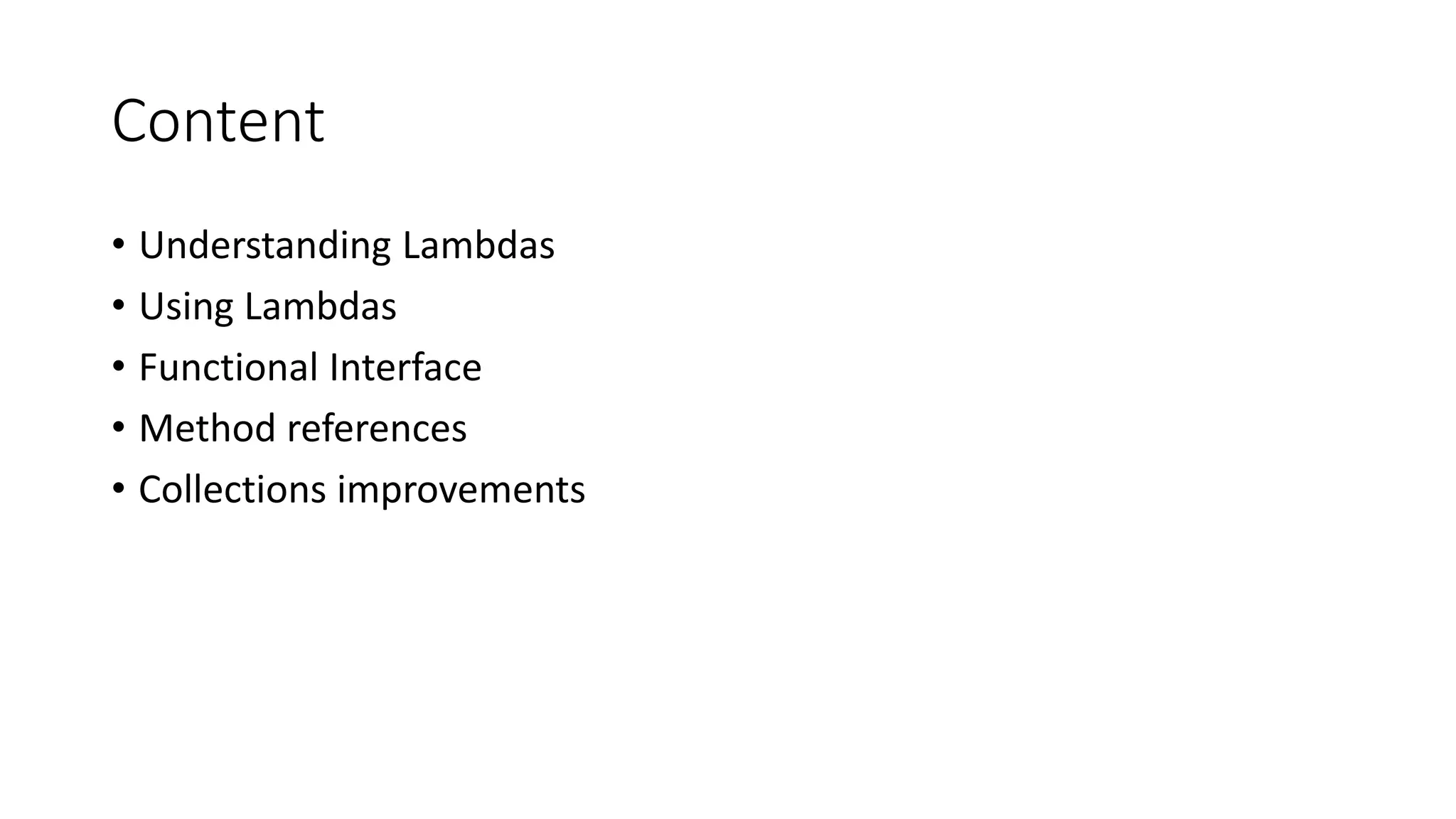
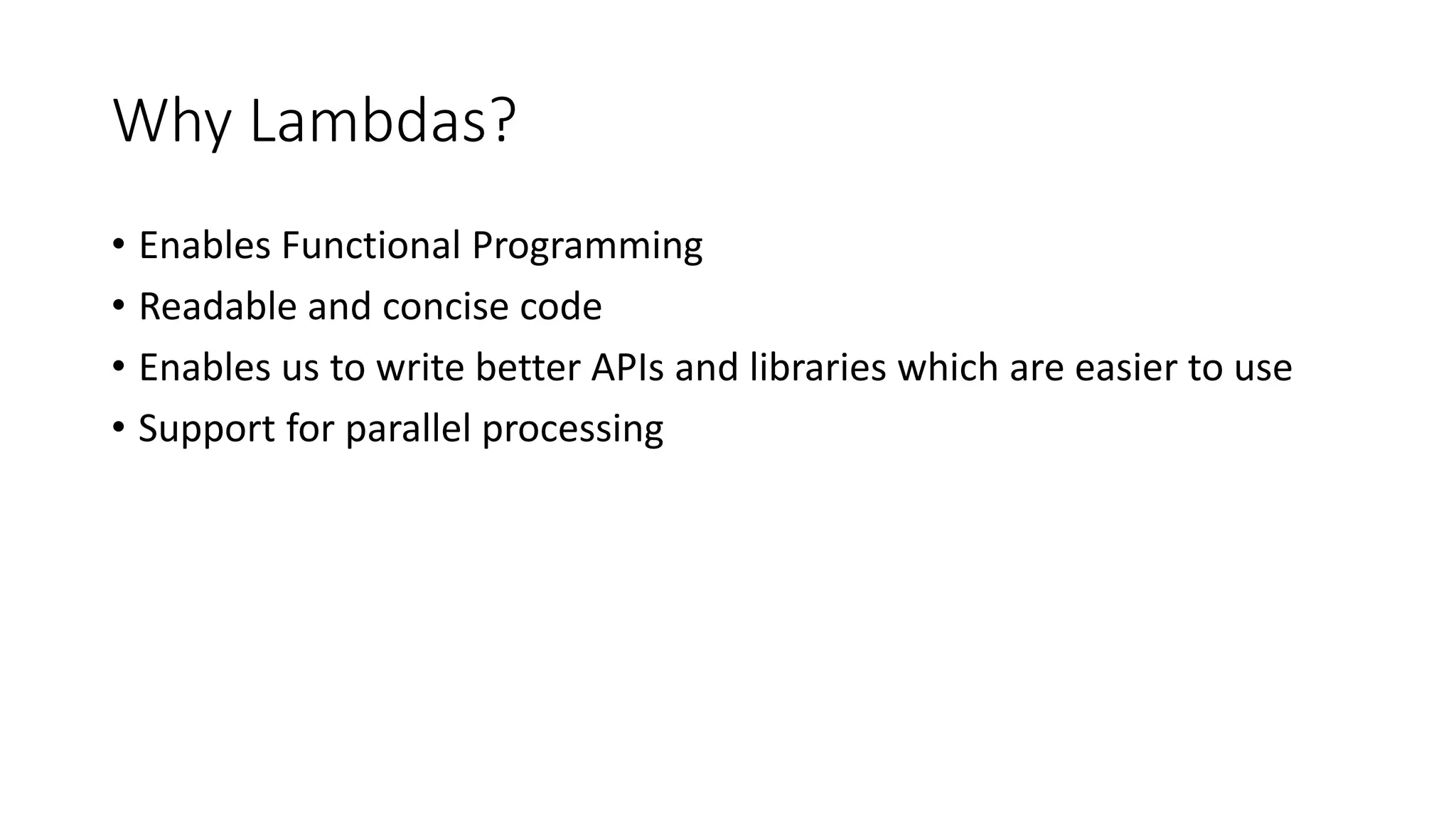
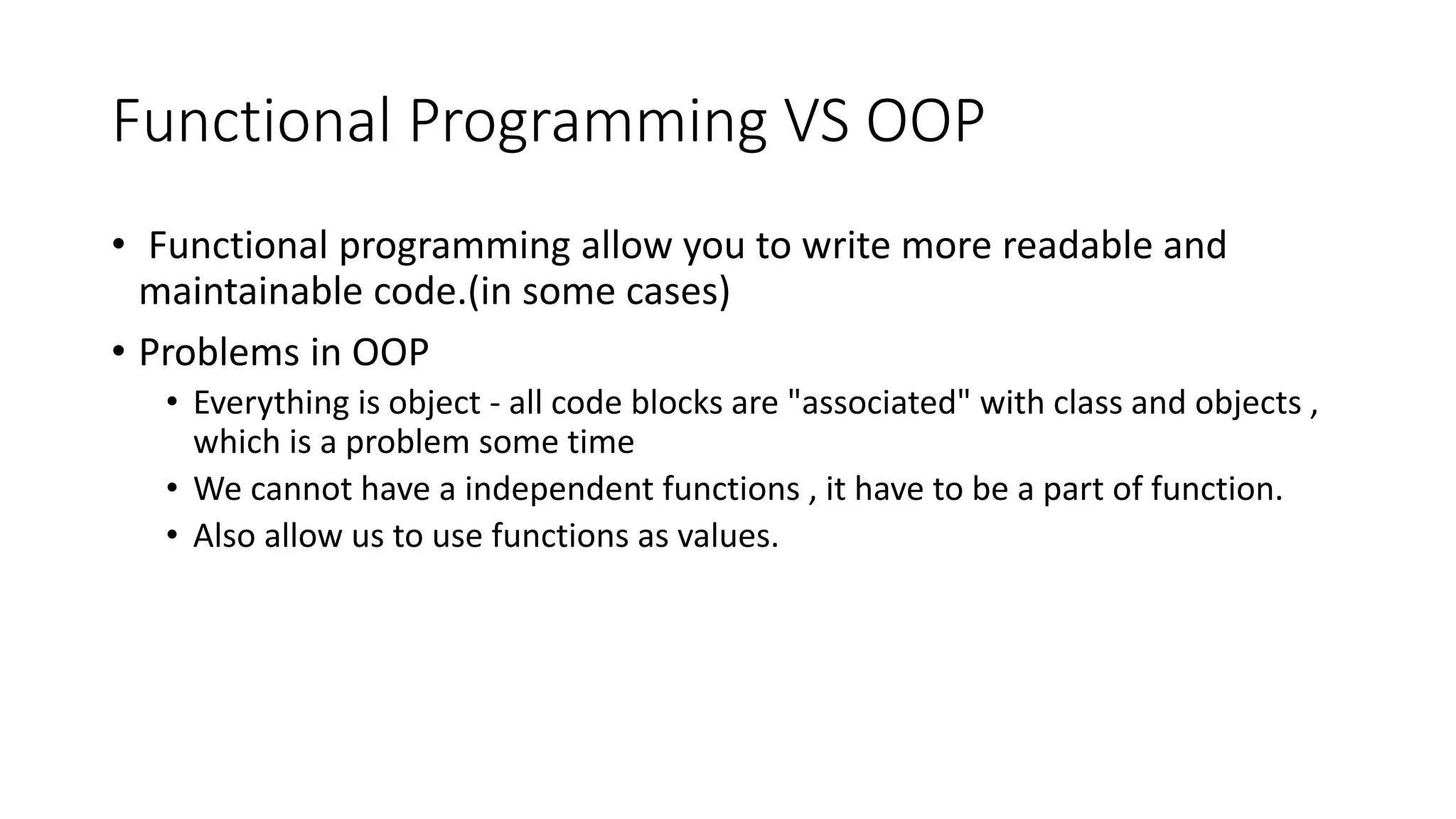
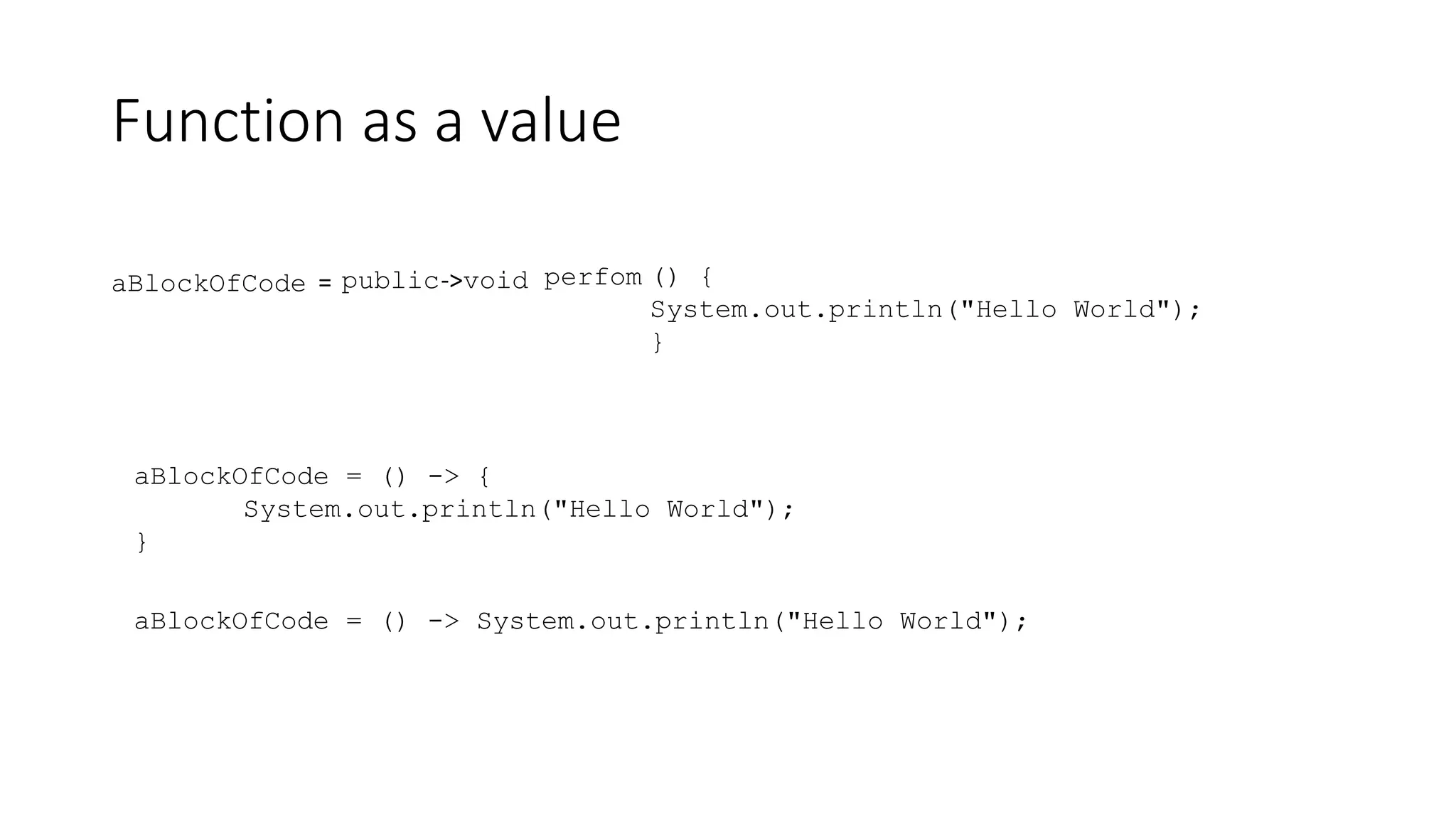
![Type Inference
• Your lambda Expression infer type of function and its return type
from the interface(functional interface).
public static void main(String[] args)
{
//StringLengthLambda myStringLenthLambda = (String s) -> s.length();
//StringLengthLambda myStringLenthLambda = (s) -> s.length();
StringLengthLambda myStringLenthLambda = s -> s.length();
System.out.println("String Length :: " + myStringLenthLambda.getLength("Hello World!!"));
}
interface StringLengthLambda
{
int getLength(String s);
}](https://image.slidesharecdn.com/lambdaexpressionsjava8-240317115916-d80f9f7e/75/Lambda-Expressions-Java-8-Features-usage-6-2048.jpg)

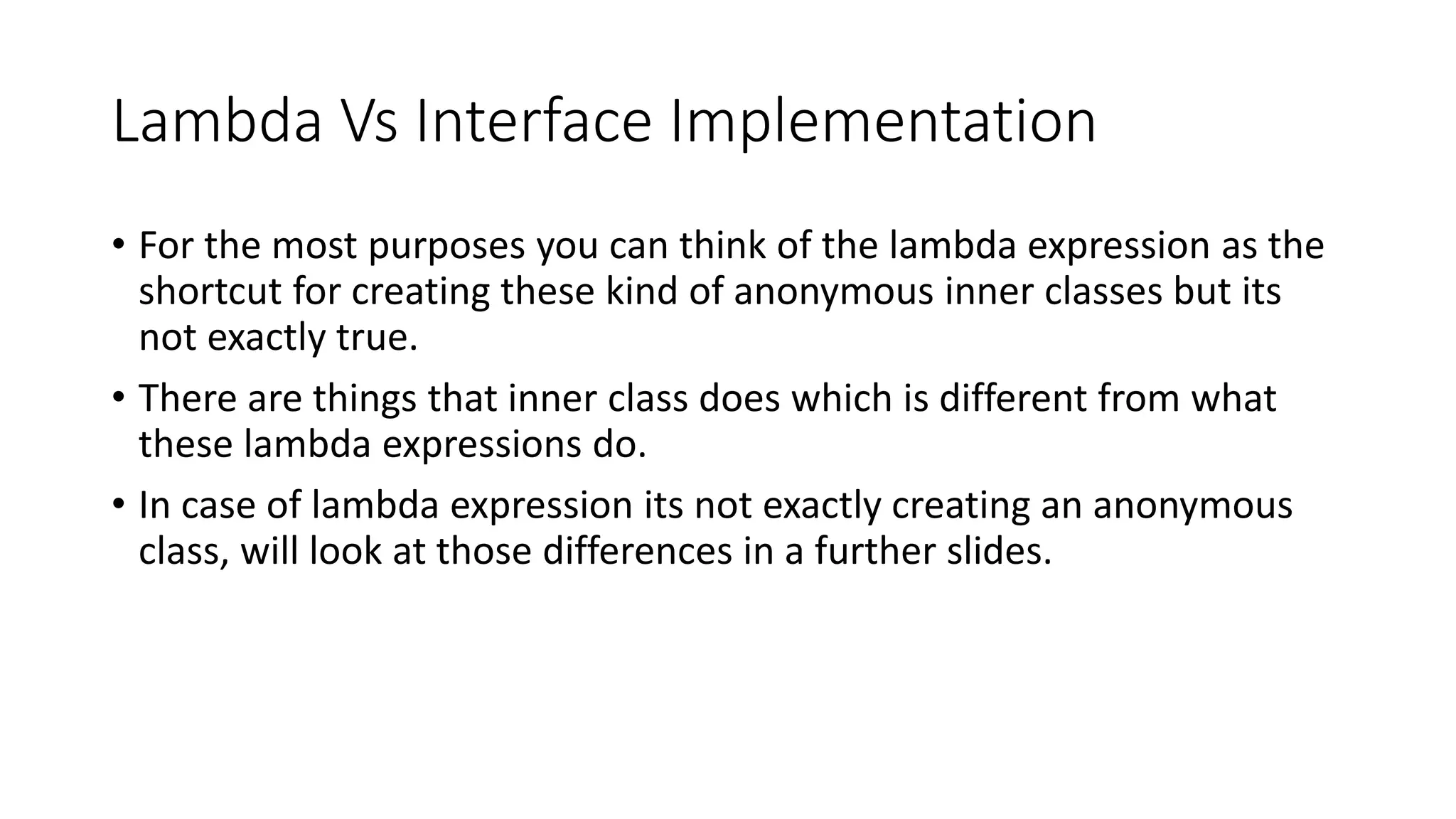
![Runnable Using Lambdas
• You can use lambda in order to create Runnable.
• Implement Using anonymous inner class
• Implement Using Lambda Expression
public static void main(String[] args) {
Thread myThread = new Thread(new Runnable() {
@Override
public void run() {
System.out.println("Printed inside runnable");
}
});
myThread.start();
}
Thread myLambdaThread = new Thread(() -> System.out.println("Printed inside Lambda Runnable"));
myLambdaThread.start();](https://image.slidesharecdn.com/lambdaexpressionsjava8-240317115916-d80f9f7e/75/Lambda-Expressions-Java-8-Features-usage-9-2048.jpg)
